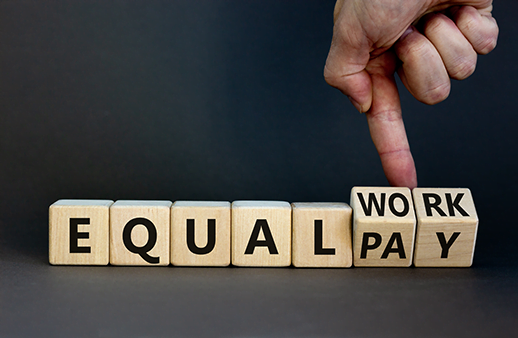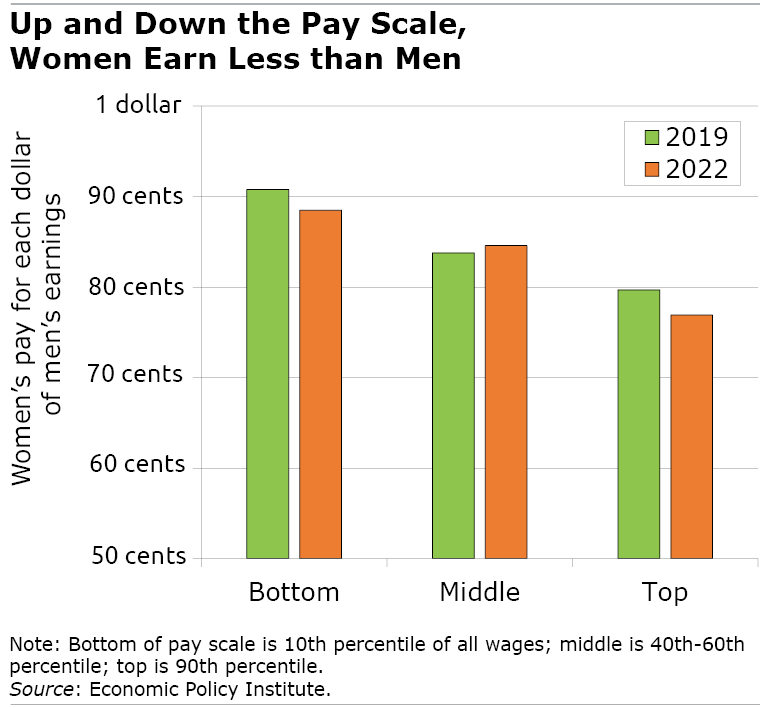
Women Have Lost a Little Ground on Pay Equality
The earnings gap between women and men remains stubbornly large. So even a little progress counts as good news.
One group of women made some gains during the pandemic. Let’s use the term middle class as shorthand for someone earning between 40 percent and 60 percent of all workers’ wages. The Economic Policy Institute (EPI) said in its wage report that these women made “a small but promising move in the right direction.”
In 2019, middle class women earned 83.8 cents for every dollar that middle-class men earned. In 2022, the women’s pay rose to 84.6 cents.
Here’s the bad news. The pay gap for all female workers widened. They earned 79.7 cents for every dollar a man was paid in 2019. That fell to 77.8 cents last year. The difference translates to about $8 less per hour, and the gulf for Black and Hispanic women is even bigger: $8.35 and $9.84 an hour, respectively. These disparities add up to thousands of dollars less in women’s paychecks every year.
Women’s lower pay might reflect, to some extent, that they choose different jobs than men or take time off to raise children. But the pay gap also grew according to a separate EPI analysis that eliminated some of the influences on how much someone earns because of their education level, age, or race.

Not even a top corporate job or advanced degree such as an MBA gets women closer to men. Quite the opposite, EPI’s report shows: the higher women are on the pay scale, the farther they are behind their male coworkers down the hall.
Low-income women, who often earn the mandated minimum wage, earn 88.5 cents for every dollar that men earn. But at the top, women receive just 76.9 cents per dollar of earnings. This is somewhat surprising, because there hasn’t been a lot of good research on what happens to high-income women. But a few analyses do point to a wider pay gap at the top of the pay scale or, in a similar vein, a widening as women age and get more experience.
The question is what, if any, role the turbulent COVID economy has played. Elise Gould, author of EPI’s pay report, said that since employment has rebounded smartly, COVID doesn’t seem to be what drove the widening of the pay gap. However, she said it is possible that the mix of jobs men and women are taking has somehow changed, though the researchers did not analyze the causes for the increase.
One idea to raise women’s pay that is getting some attention is requiring employers to publish salary information, either the pay scale within the organization or specific pay levels for advertised job openings. Since 2018, more than a dozen states have passed pay transparency laws, though it’s too early to gauge whether the laws are helping, according to a Pew report.
EPI said closing the pay gap would require a range of policies to make real progress on the entrenched problem: “At all parts of the wage distribution, women are paid less than men.”
Squared Away writer Kim Blanton invites you to follow us on Twitter @SquaredAwayBC. To stay current on our blog, please join our free email list. You’ll receive just one email each week – with links to the two new posts for that week – when you sign up here. This blog is supported by the Center for Retirement Research at Boston College.






